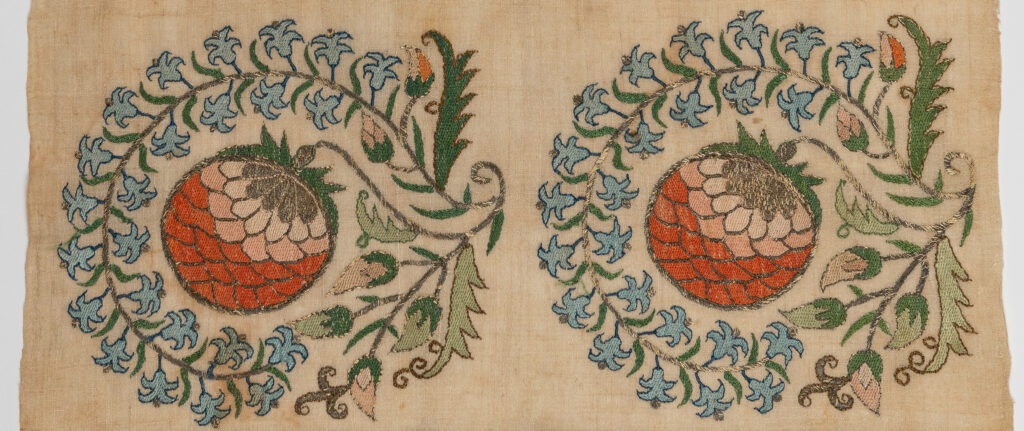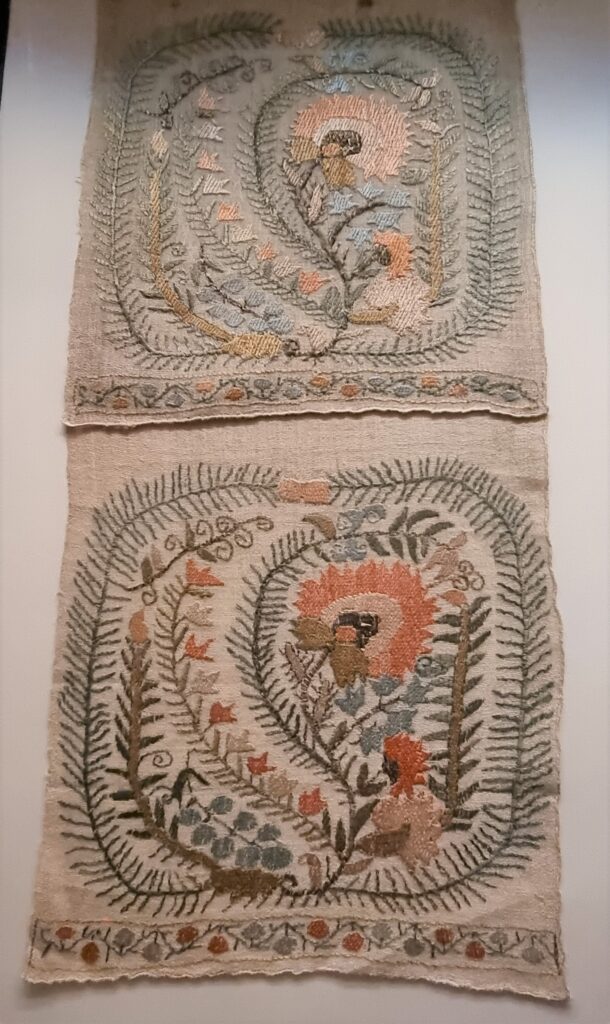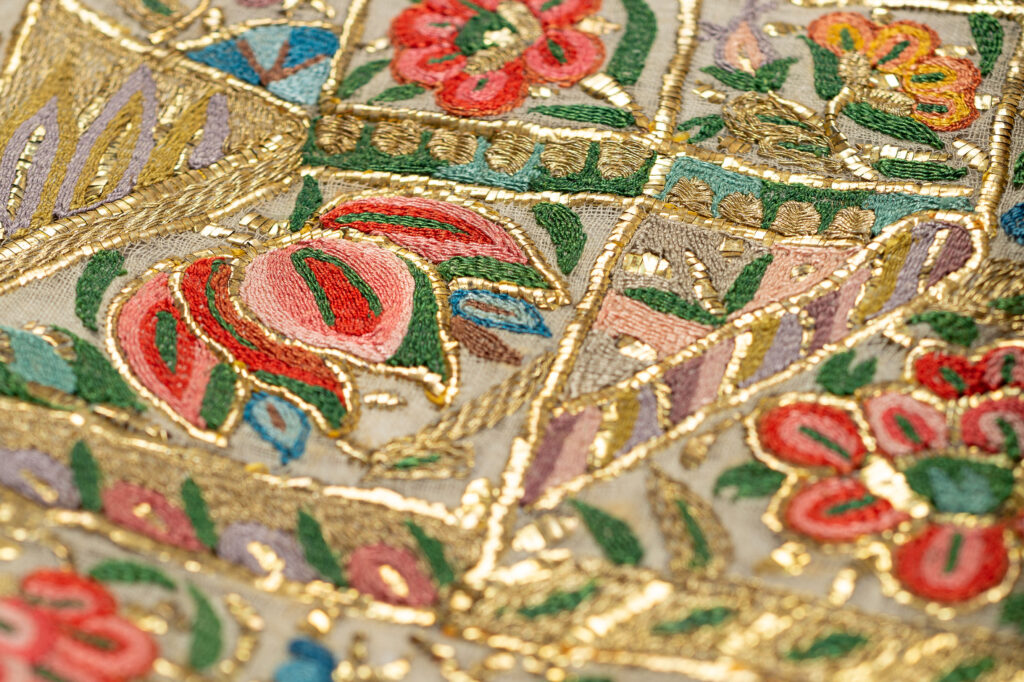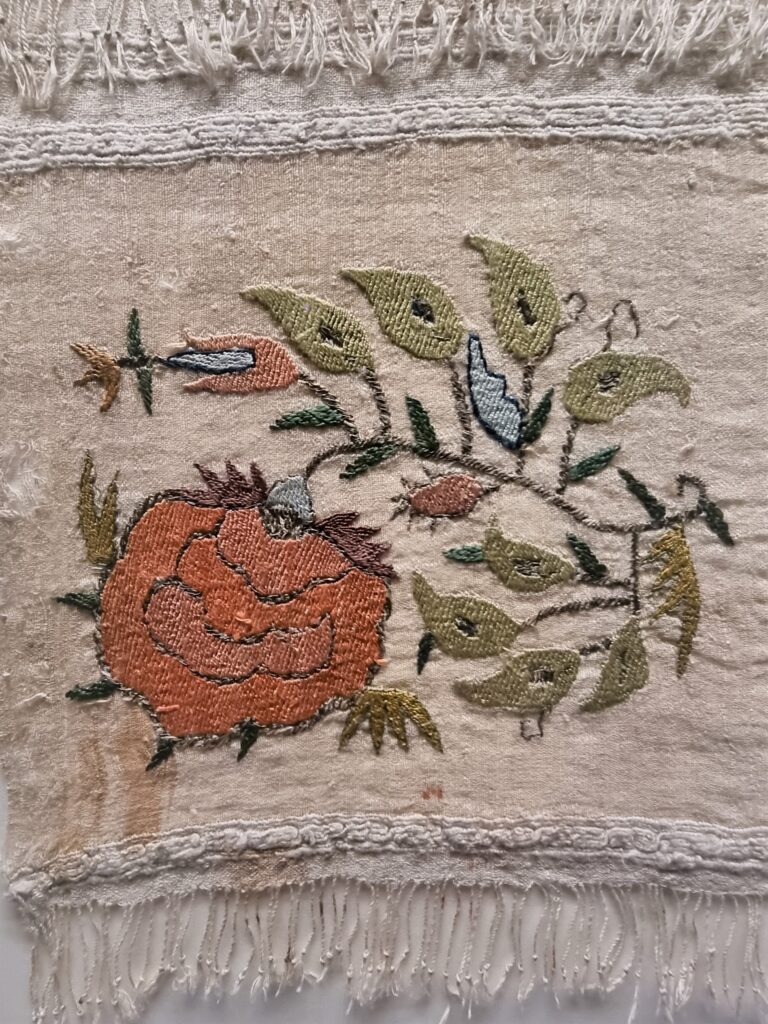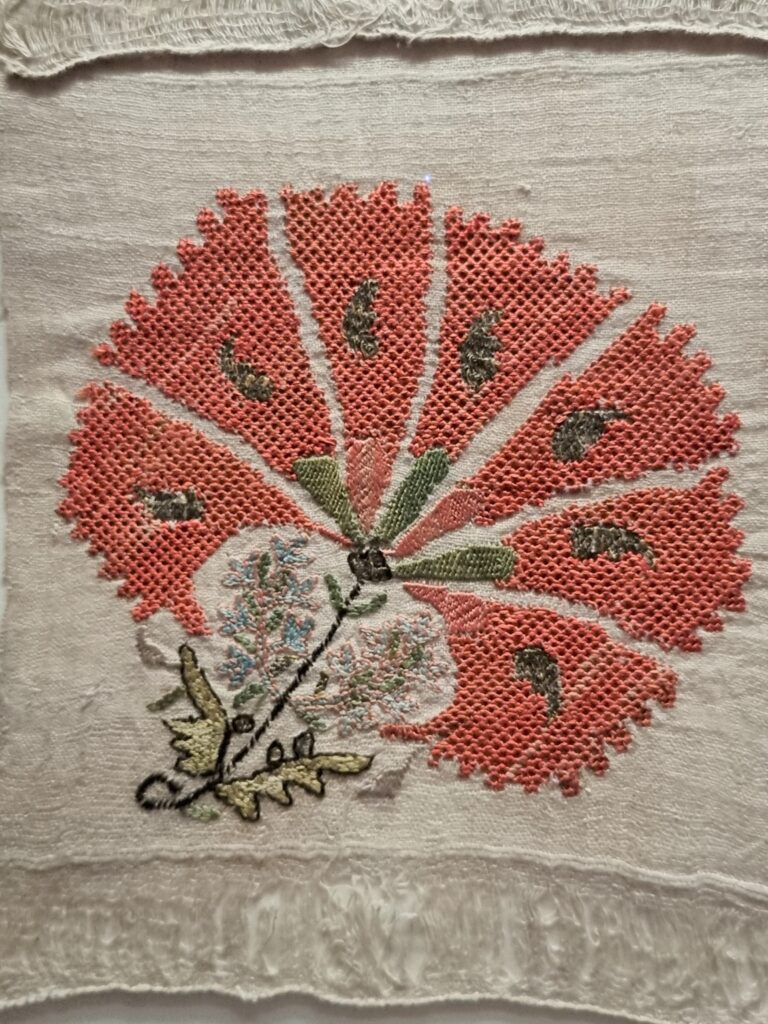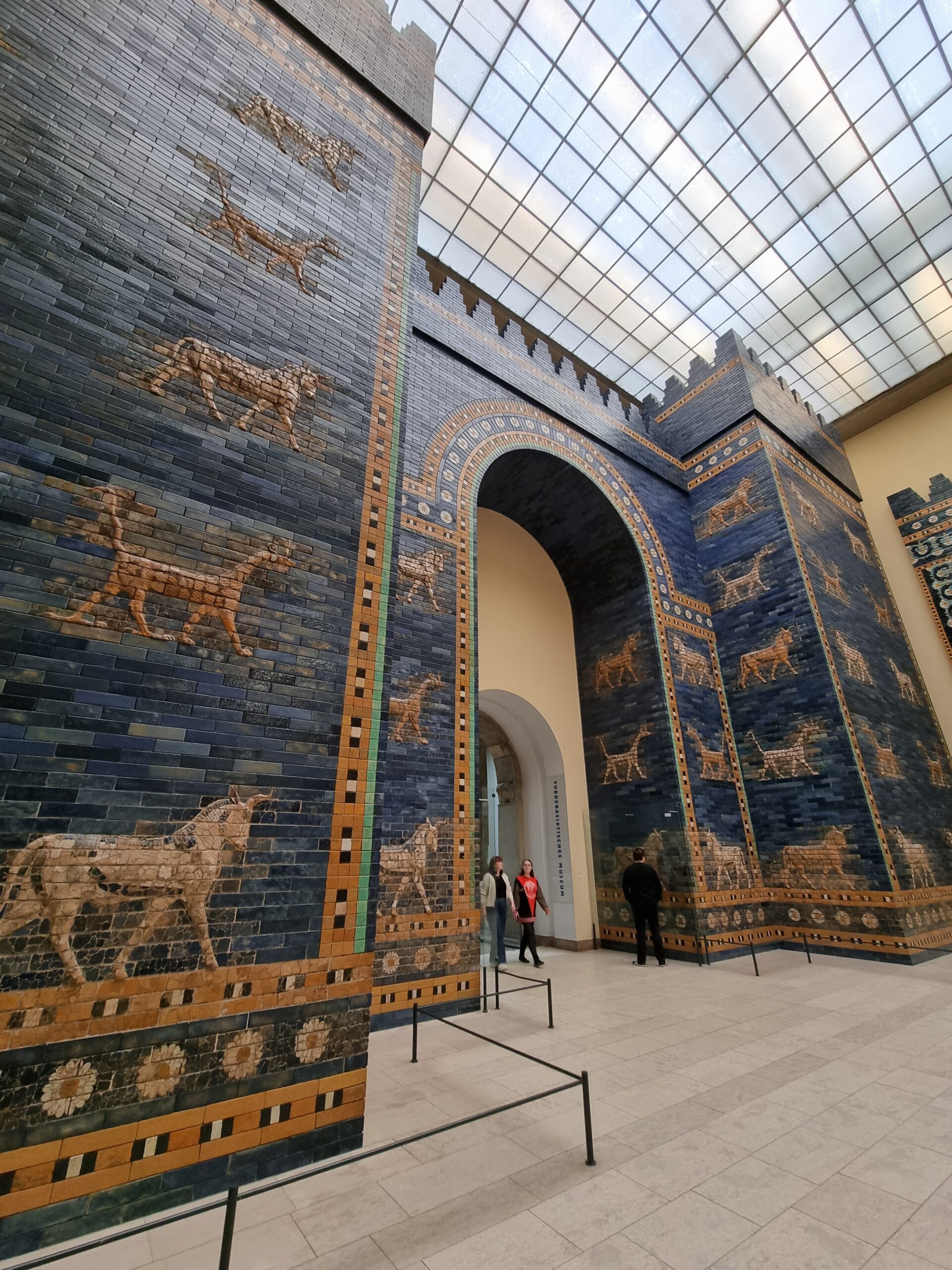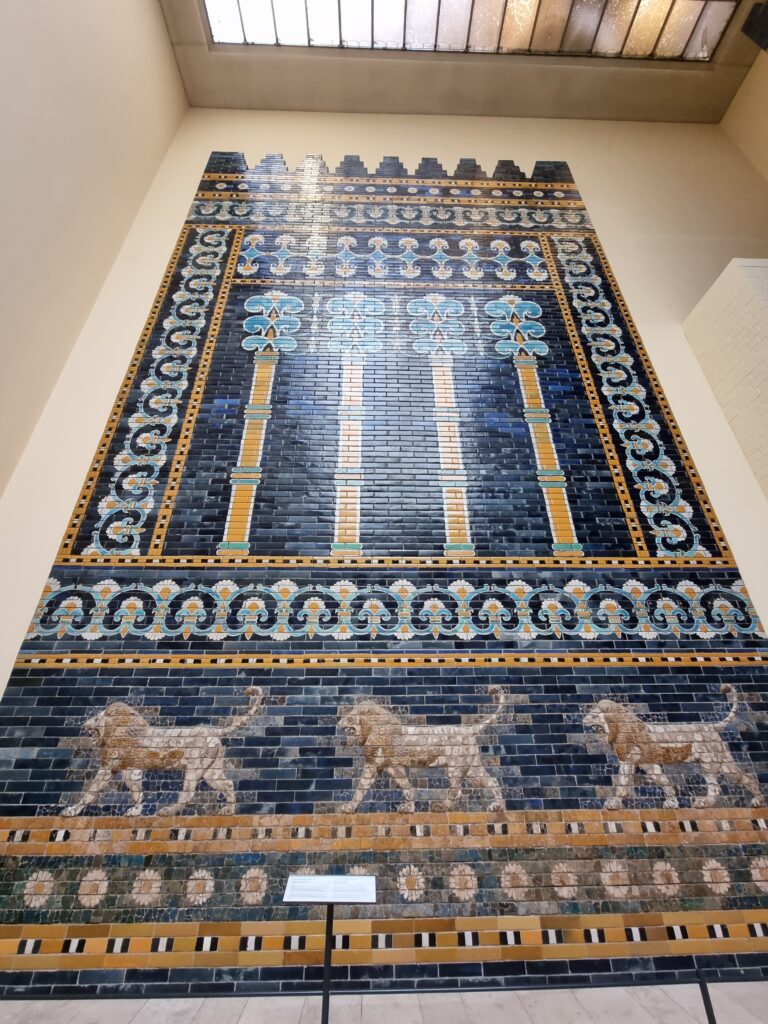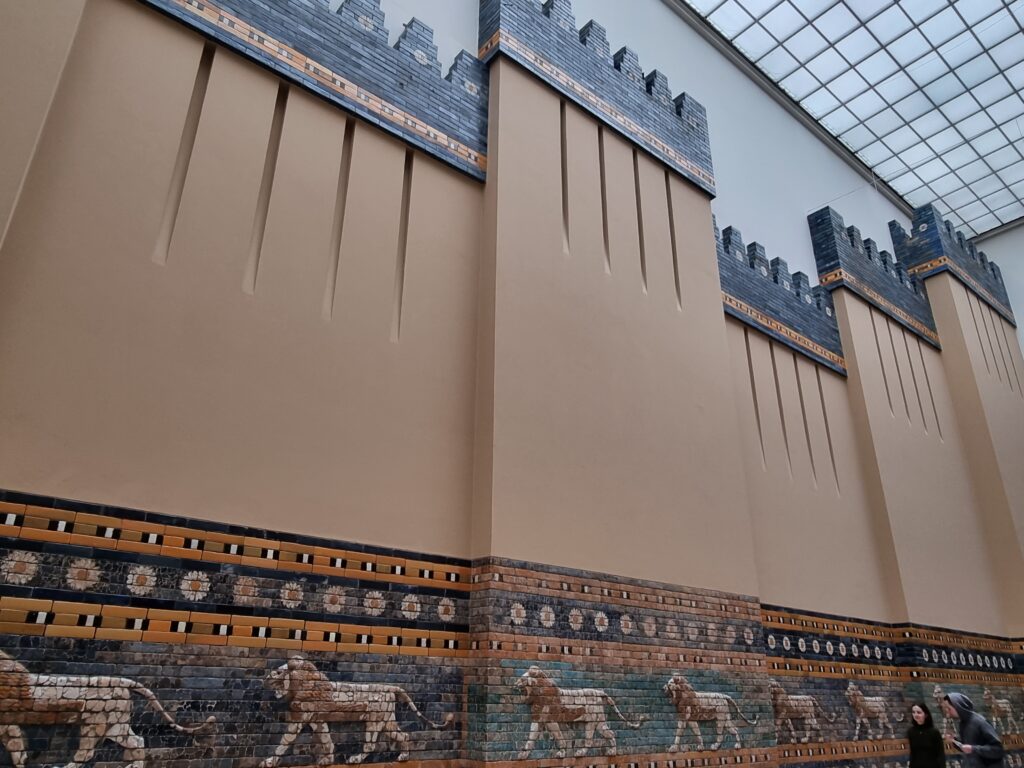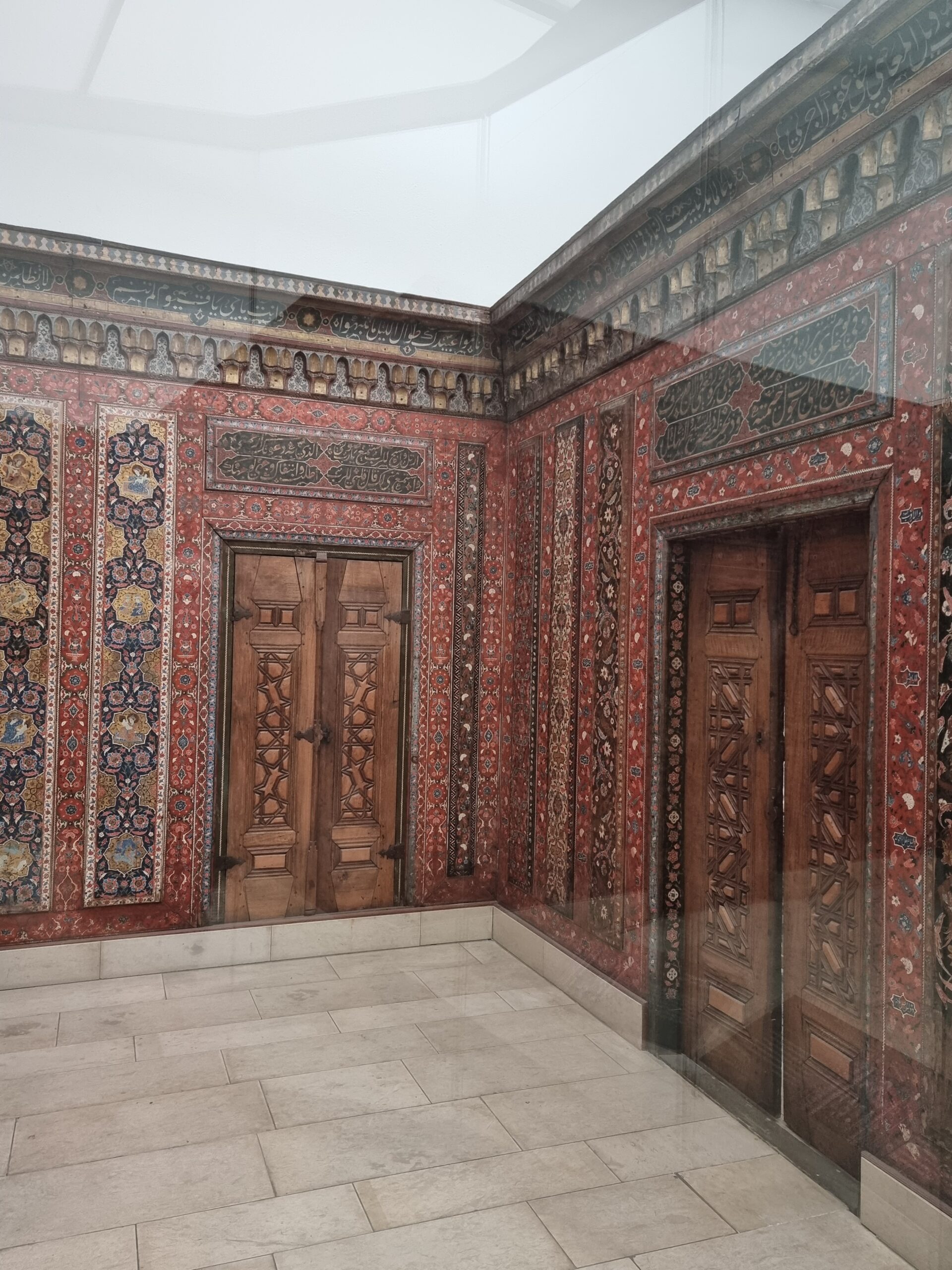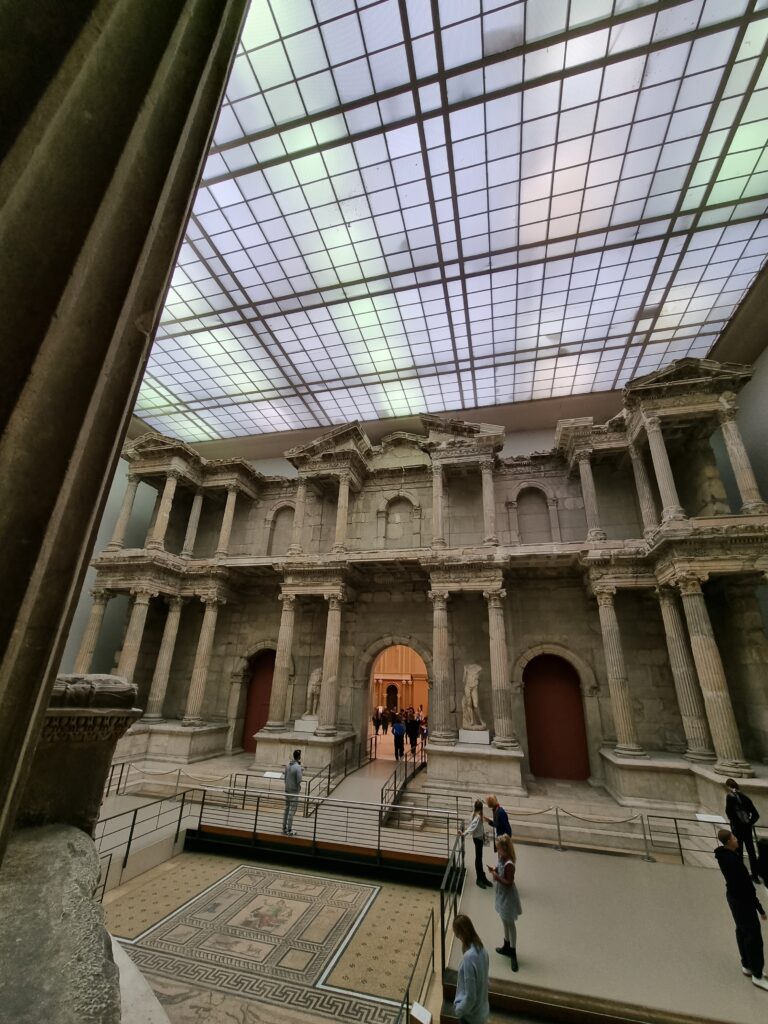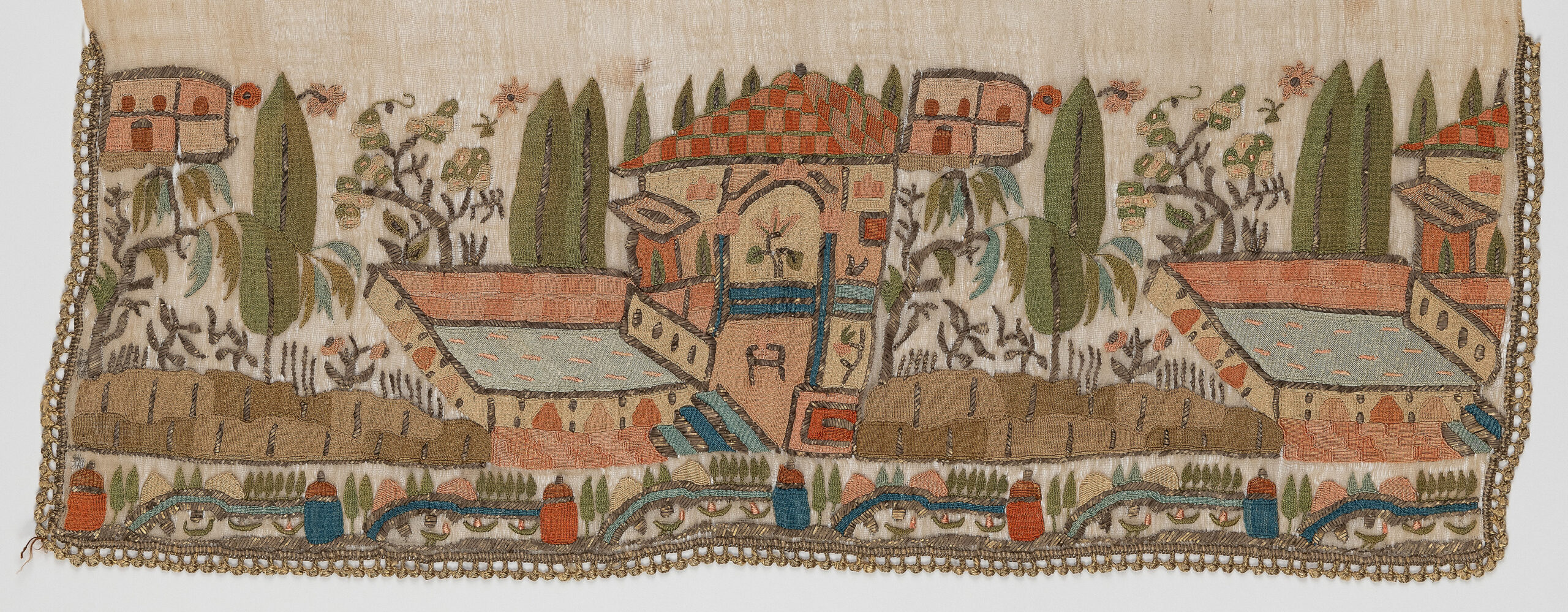
Embroidered gardens in the special exhibition of the Pergamon Museum
Appropriate to the beginning of spring, we have a particularly flowery exhibition recommendation: the small, fine special exhibition "Embroidered Gardens". On display is a unique collection of embroidered, Ottoman textiles from the 16th-19th centuries. 25 objects are from the Borgs Collection in Düsseldorf and include typical floral motifs such as tulips and carnations, which were in fashion at the court of Istanbul in the 2nd half of the 16th century.
The Borgs collection in Düsseldorf comprises about 200 pieces, which can currently be admired for the first time in a small selection of 25 embroideries in the Pergamon Museum. In 1954 the couple Borgs traveled to Turkey for the first time and discovered the variety and beauty of these handicrafts. In the following years, in which the couple traveled there again and again, this wonderful collection of 200 pieces was created. Unfortunately there is no permanent exhibition where these embroideries can be seen, so you should not miss this opportunity.
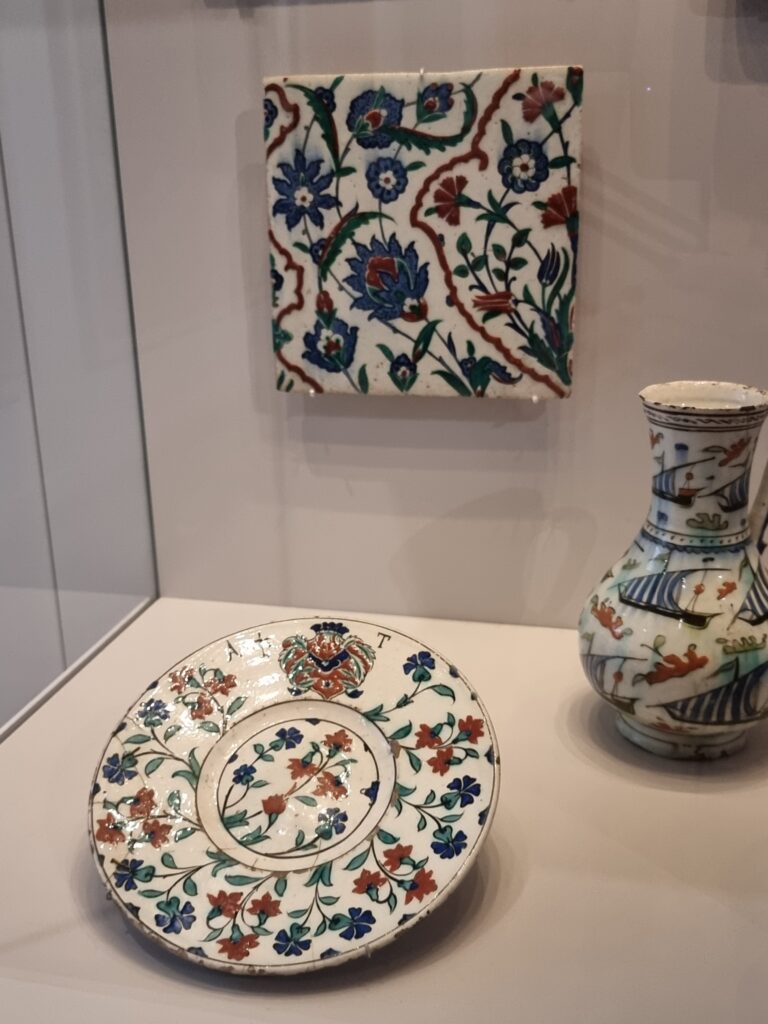
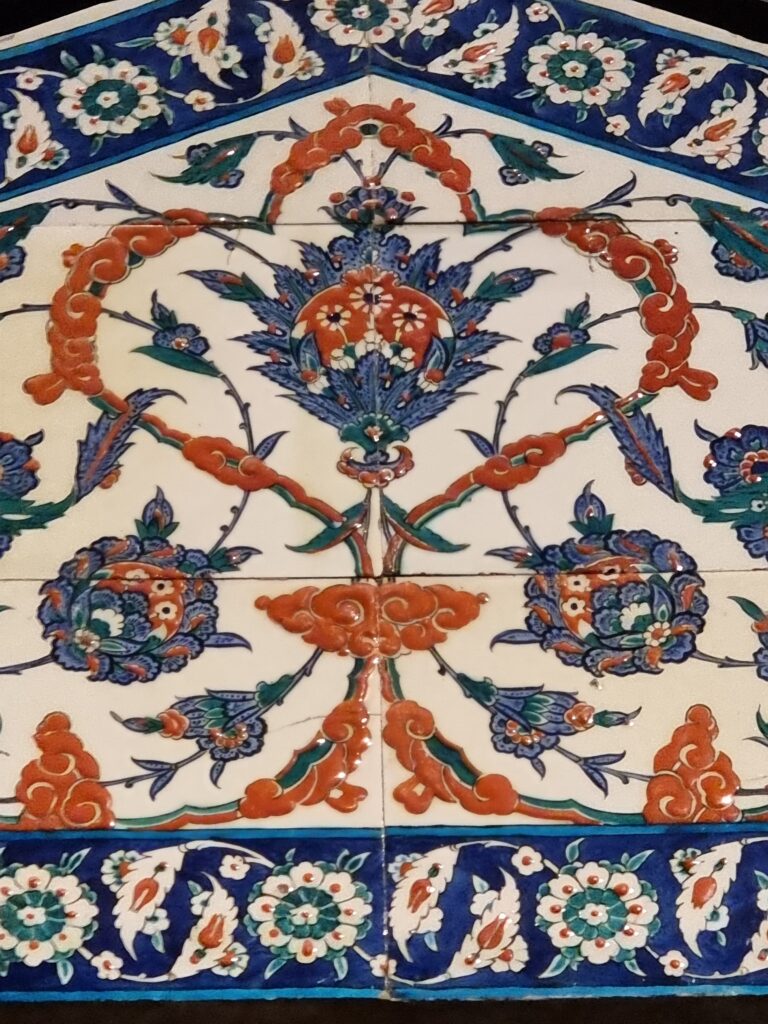
The motifs of the embroideries followed the fashion taste of the time and were borrowed from the interiors of the palaces, which were decorated all over with tiles. Many of them showed floral motifs. They were soon found in the homes of the wealthy from Istanbul to Aleppo, too – depicting flowers and fruits (most of them had as well a symbolic meaning). Wall tiles, carpets and embroidery resembled those found in the Topkapi Palace, the seat of the sultans in Istanbul, the capital of the Ottoman Empire. The classical motifs were used until the 18th century. It is assumed that the motifs already existed printed on textiles, so that they could be embroidered at home according to the preliminary drawing.
Evliya Çelebi, a 17th century traveler, wrote in his travelogue of 20 embroidery stores that existed in Istanbul at that time, as well as local workshops where 65 men executed the finest embroidery work. The works were of such high quality that they could be attributed to these workshops on the basis of these exceptionally finely worked patterns and neat workmanship, as well as the rich decorations. They executed their works according to the designs of NAKKAŞHANE, the design studio of Topkapi Palace. Motifs and techniques of embroidery were passed down for centuries, and some of them were artfully embellished with silver and gold threads (the so-called silver and gold lantern). The exhibition shows both the works and details and their handwork techniques that were necessary to produce them.
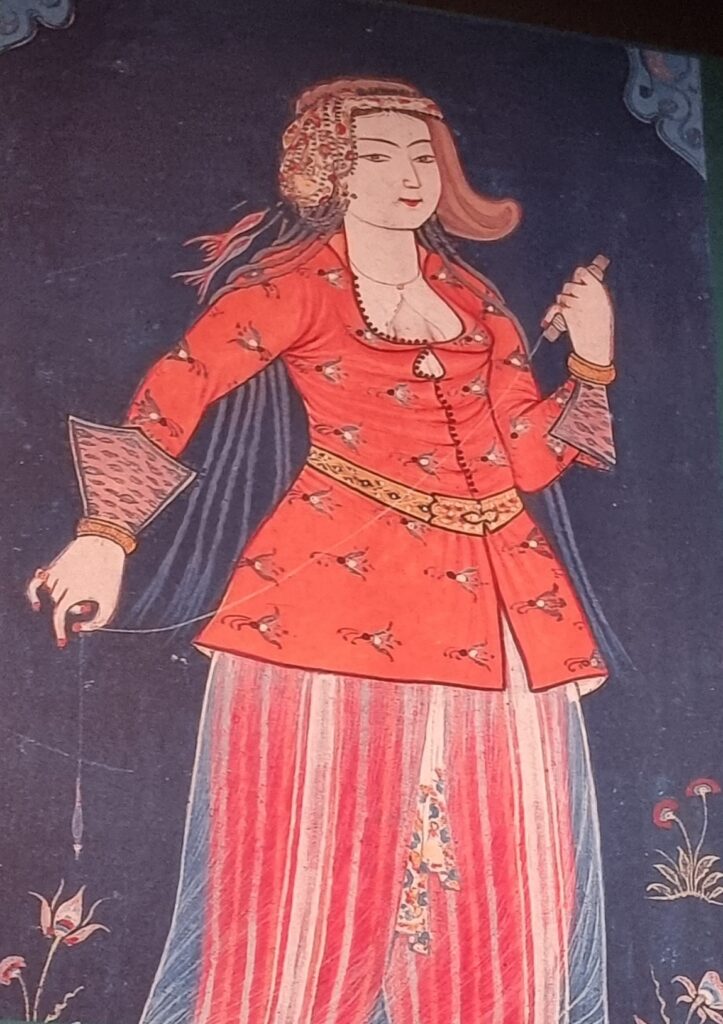
The flowers of the embroideries in the Ottoman court style had not only a decorative but also a symbolic meaning.
For example, the tulip was not only a favorite flower of the Ottomans but also symbolized the “one God of Islamic mysticism”. Since each tulip bulb produces only one tulip, this characteristic of the tulip was equated with the uniqueness of the deity.
Not only the special exhibition “Blooming Gardens” but also the permanent exhibitions with the world-famous processional route leading to the Ishtar Gate of Babylon or the stunningly detailed Aleppo Room, the carpet collection or the many ceramics, gold and silver masterpieces of the craftsmen in collection of the Museum of Islamic Art are definitely worth a visit, for which you should plan enough time!
Where?
Museum of Islamic Art in the Pergamon Museum, Bodestraße 1-3, 10178 Berlin
Infos?
https://www.smb.museum/museen-einrichtungen/museum-fuer-islamische-kunst/ausstellungen/aktuell/
Cover: Towel embroidered with depictions of houses and gardens, Turkey, late 18th century, © Claus Uhlendorf


